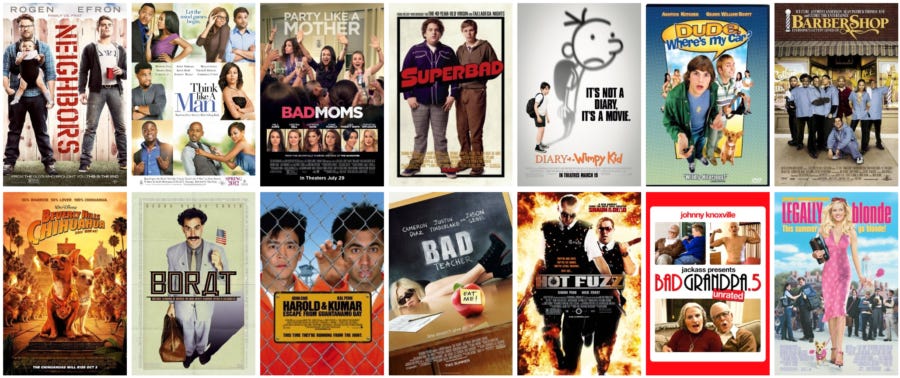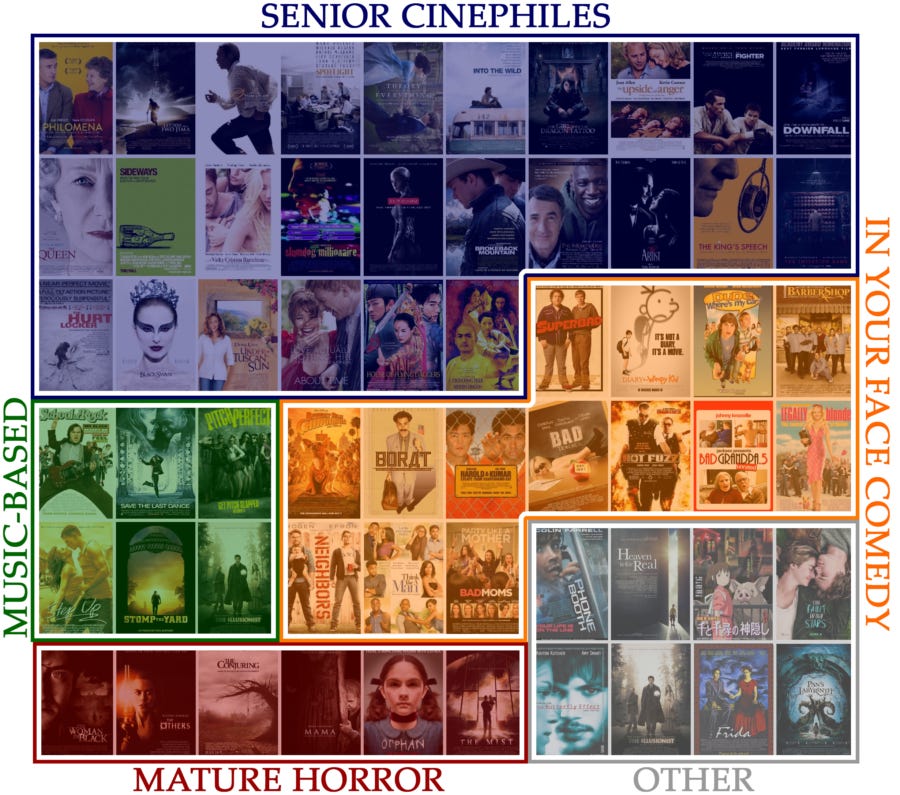Patterns among the most profitable movies budgeted $10m to $20m
This is the latest in a series of research projects I am conducting with Bruce Nash of The Numbers, on behalf of the American Film Market. In previous articles, we've looked at patterns among the most profitable films budgeted between $20 million and $50 million, and those budgeted between $500k and $3 million. This time around, we start to fill in half of the gap by looking at films made for between $10 million and $20 million.
As before, we've reviewed all the films in Nash Information Services' database in that budget range released between 2000 and 2016. We then identified the sixty most profitable movies, after accounting for all sources of revenue and estimating marketing and distribution costs. That gives roughly three films a year from the period under consideration. For more details of our methods and criteria, see the Notes section at the end of this piece.
This analysis produced a result that's slightly different from our previous investigations. Rather than having a fairly even split between several different categories, there's a significant cluster of films that share the same audience.
Model One: Senior Cinephiles

By far the biggest category in the list is a group of films that found an older audience - what we're calling Senior Cinephiles.
At the risk of upsetting every 36-year-old reading this article, we're considering anyone over 35 to be “senior.” (Essentially, if you lost count of how many Spider-Men there have been, you fall into this category). In our defence, this is how the demographers segment the market, so it's the data we have to work from in the first place.
Films in this category have an audience that is roughly 55% over the age of 35, compared to around 22% for the market as a whole. To give you a sense of how much these films differ from the norm, see below for the demographic data for these films as they relate to UK cinema audiences.

Unsurprisingly, high-quality drama, often with a grey-haired lead, dominates the upper reaches of this list. Notably, around half of the films in the list are foreign, including The King's Speech, The Queen, Philomena, The Artist, The Imitation Game, The Girl with the Dragon Tattoo, Downfall, Pan's Labyrinth, and Les Intouchables. The other half tend to be US-produced films that vied for (and sometimes won) Oscar glory: Brokeback Mountain, 12 Years a Slave, Sideways, Into the Wild, The Hurt Locker, Black Swan, Spotlight, The Fighter, and Letters from Iwo Jima, for example.
So it's fair to say that going after an older audience with a high-quality drama is a good bet for success at this budget range. But there are a couple of films that stood out to us for being a little more targeted at the older set, and a little less awards-focused: About Time and Under the Tuscan Sun. Also lurking on this list is sci-fi drama Ex Machina, which had broader appeal, but skewed towards a much older audience than is usual for the genre.
So, as always, good films rise to the top, but we think that this budget range also skews older, regardless of the quality of the film.
Model two: In Your Face Comedy

In our analysis of $20m-$50m films, we found that lowbrow was the order of business for comedies. At this lower budget range, there are vestiges of the lowbrow genre (Jackass and Harold & Kumar feature, for example), but this group has a more concept-driven feel to it. Movies like Legally Blonde, Neighbors, Bad Teacher, Borat, Hot Fuzz, and Think Like a Man all have a central theme or characters that poke fun at society, rather than the more situational comedy we saw at a higher budget.
When looking at the group as a whole, they all share a trait that we feel is best described as “in your face.” The filmmakers take a concept and run with it as far as they can. The concept itself can come from anywhere—Borat and Beverly Hills Chihuahua don't share much of the same demographic—but it's all in the execution.
These are all films for which a significant portion of the audience came out thinking, “my friend would love this.”
Model three: Mature Horror

In keeping with the theme of this budget range being fertile ground for older audiences (where, as we have noted “older” means, depressingly, over 35), the horror movies we found this time tended more towards the psychological, and less towards the gore. All of the films build suspense through drama, usually with older protagonists.
Note, however, that there are only six films in the horror genre in this list: about one every three years between 2000 and 2016. There were no horror films in the $20m-$50m budget range, so this is an improvement. But few horror films made for over $10 million really break out, at least in comparison to other genres, and certainly compared to low-budget horror.
Model Four: Music-based films

Sometimes this analysis throws up a surprise. At higher budgets, we found a group of age-reversal family films. At this budget range, there's a sizable group of films that are based on music and dance, most of them lighter fare such as School of Rock and Step Up, but also last year's Oscar darling La La Land.
The films' musical styles tend to cluster around the mainstream. There's no punk, blues, or classical music to be found, which is frankly a little disappointing. But going for what works with general audiences seems to be what works financially.
We excluded sequels from this research as we felt that their existing audience was a large factor in their success. However, had we not done so then this category would also have included Magic Mike XXL, High School Musical 3: Senior Year and Step Up 2: The Streets.
Analysis
As we've looked at different budget ranges, it's been consistently surprising to us how much films will cluster into groups in each range. Now we've completed three of these articles, it's remarkable how each analysis throws up a very specific category of film that “works” at this budget range, and not at others. There was only one hit (Chicago) in the $20m-$50m budget groups that was first-and-foremost music- or dance-based, but we found six of them budgeted between $10m and $20m. Similarly, age-reversal comedies stood out at the higher budget range, and there are none in the list this time.
Whether that has implications for filmmakers is something worth thinking about. Certainly, if you're looking to make a musical, keeping the budget under control looks like a key consideration. And, particularly at this budget range, appealing to a more mature audience looks to be important.

Notes
In order to conduct this study, we began with a list of over 3,000 films from The Numbers’ financial database, investigating full financial details, including North American (i.e. “domestic”) and international box office, video sales and rentals, TV and ancillary revenue. We narrowed our focus to study feature films released between 2000 and 2016 and budgeted between $10 million and $20 million. Finally, we calculated the likely profit margin for the producers, after all revenue and expenses were taken into account.
The financial figures come from a variety of sources, including people directly connected to the films, verified third-party data and computation models based on partial data and industry norms. It is possible that one or two of the individual figures are different to our predictions, though en masse we are confident of the larger picture.
Sequels were excluded as their success could be attributed to their existing audience. This affected Magic Mike XXL, Step Up 2: The Streets, High School Musical 3: Senior Year, Saw V, Jackass 3D and Open Season 2.
Demographic information of film audiences is not generally shared publically so in order to build up a profile of the films in the Senior Cinephile category we used a combination of indicators including public data (such as that on the Pearl and Dean site in the UK) and private sources of data.


